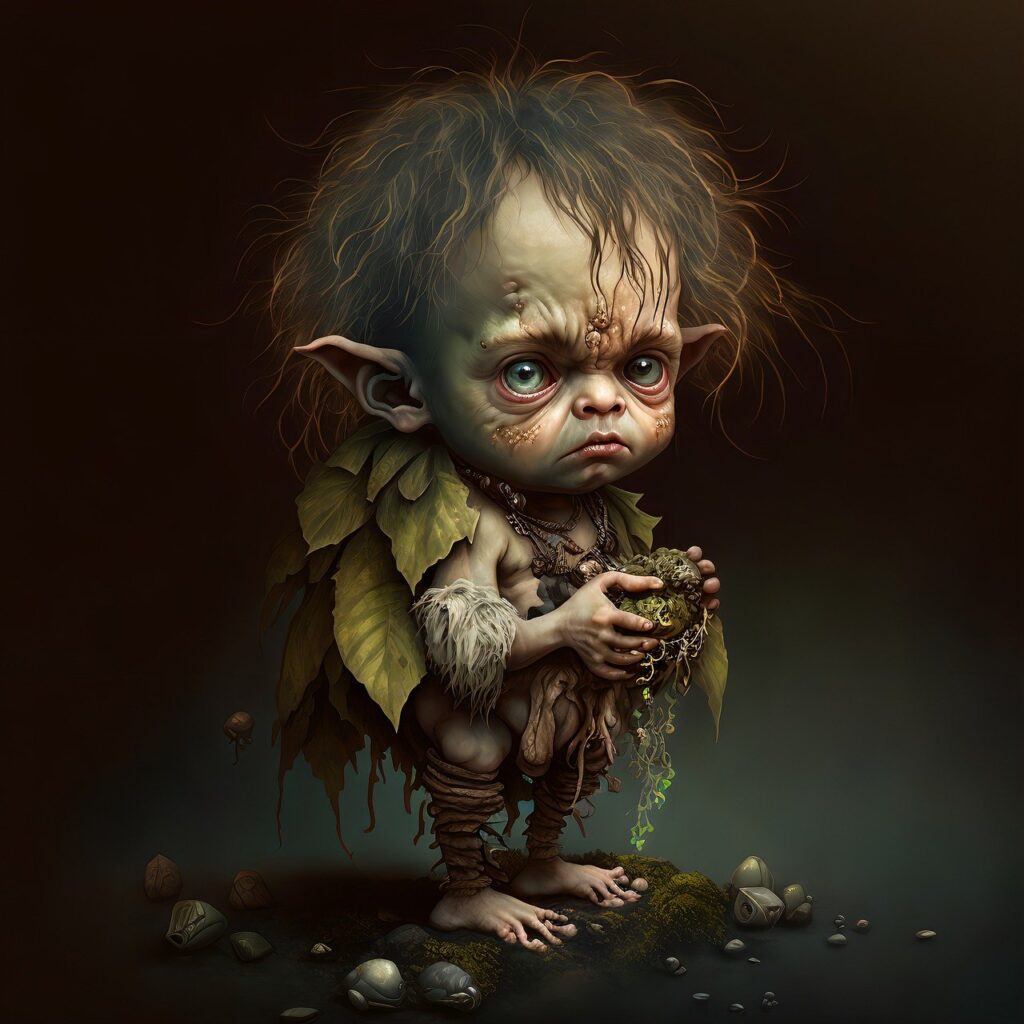
NFT Marketing Fundamentals You Need To Know
NFT Marketing: Fundamentals You Need To Know
In the ever-evolving realm of NFTs, NFT marketing emerges as a pivotal force, driving awareness, interest, and demand for non-fungible tokens. Both traditional and digital strategies play vital roles in reaching target audiences, showcasing NFT artworks, and establishing a strong presence in a competitive marketplace.
The core objective of NFT marketing is to boost sales and enhance NFT value. Yet, it extends its reach to other goals like building brand recognition, generating leads, and fostering NFT communities.
Here are some potent NFT marketing strategies:

NFT Marketing: Building a Thriving Community
Creating engaging content, interacting with potential buyers on social media, and hosting events and giveaways can foster a supportive NFT community.
Building a strong community is one of the best ways to market NFTs because it allows marketers to create a direct connection with potential buyers and to build trust. When people feel like they are part of a community, they are more likely to support the projects that the community is behind.
Here are some specific ways to build a strong community for NFT marketing:
- Create engaging content: This could include blog posts, videos, podcasts, or even social media posts that are informative, entertaining, and relevant to your target audience.
- Interact with potential buyers on social media: Respond to comments and questions, participate in relevant conversations, and run contests and giveaways.
- Host events and giveaways: This could include online events such as AMAs, Twitter Spaces, and Discord meetups, or offline events such as art shows, meet-and-greets, and conferences.
- Offer exclusive benefits to community members: This could include early access to new NFTs, discounts on merchandise, or even exclusive NFT airdrops.
- Be transparent and authentic: People are more likely to support projects that they feel good about. Be honest and open with your community about your plans, your goals, and any challenges you are facing.
Building a strong community takes time and effort, but it is one of the most important things you can do to market your NFTs successfully.

Here are some examples of NFT projects that have built strong communities:
- Bored Ape Yacht Club (BAYC): BAYC is a collection of 10,000 unique digital apes that are stored on the Ethereum blockchain. BAYC has a very active community on Twitter, Discord, and Reddit. The community members regularly interact with each other and with the BAYC team. BAYC also hosts regular events for its community members, both online and offline.
- CryptoPunks: CryptoPunks is a collection of 10,000 unique digital characters that are also stored on the Ethereum blockchain. CryptoPunks has a very active community on Twitter and Discord. The community members regularly interact with each other and with the CryptoPunks team. CryptoPunks also hosts regular events for its community members, both online and offline.
- Art Blocks: Art Blocks is a platform for creating and selling generative art NFTs. Art Blocks has a very active community on Twitter and Discord. The community members regularly interact with each other and with the Art Blocks team. Art Blocks also hosts regular events for its community members, both online and offline.
These are just a few examples of NFT projects that have built strong communities. By following their lead, you can build a strong community around your own NFT project and increase your chances of success.
NFT Marketing: Leveraging Social Media
Platforms like Twitter, Discord, and Reddit are invaluable tools for connecting with potential buyers and reaching a broader audience.
Social media platforms are essential tools for NFT marketing because they allow marketers to reach a large audience and to connect with potential buyers directly.
Here are some specific ways to leverage social media for NFT marketing:
Twitter: Twitter is a great platform for sharing news and updates about your NFT project, as well as for engaging with potential buyers. You can use Twitter to:
- Share links to your website and social media pages
- Share images and videos of your NFTs
- Participate in relevant conversations
- Run contests and giveaways
- Interact with potential buyers by responding to their tweets and answering their questions
Discord: Discord is a chat platform that is popular among the NFT community. You can use Discord to:
- Create a server for your NFT project
- Host AMAs and other events
- Communicate with your community members on a daily basis
- Offer exclusive benefits to server members, such as early access to new NFTs or discounts on merchandise
Reddit: Reddit is a forum platform that is also popular among the NFT community. You can use Reddit to:
- Post about your NFT project in relevant subreddits
- Participate in discussions about NFTs
- Answer questions from potential buyers
- Promote your NFT project through paid advertising on Reddit

In addition to these three platforms, other social media platforms that can be used for NFT marketing include Instagram, TikTok, and Facebook.
Here are some tips for using social media for NFT marketing effectively:
- Be active and engaged: Post regularly and interact with your followers by responding to their comments and questions.
- Use relevant hashtags: This will help people who are interested in NFTs to find your posts.
- Create visually appealing content: NFTs are all about visuals, so make sure your posts are visually appealing.
- Run contests and giveaways: This is a great way to generate excitement and buzz around your NFT project.
- Partner with other NFT projects: This is a great way to cross-promote each other’s work and to reach a new audience.
By following these tips, you can leverage social media to market your NFTs effectively and reach a large audience of potential buyers.
NFT Marketing: Utilizing Paid Advertising
Paid platforms such as Google Ads and Facebook Ads help target audiences effectively, driving leads and sales.
Paid advertising platforms like Google Ads and Facebook Ads can be used to reach a targeted audience and to generate leads and sales for NFT projects.
Google Ads: Google Ads is a pay-per-click (PPC) advertising platform that allows you to create ads that appear at the top of Google search results. You can target your ads to people who are searching for specific keywords, such as “NFT” or “crypto art.”
Facebook Ads: Facebook Ads is another PPC advertising platform that allows you to create ads that appear on Facebook and Instagram. You can target your ads to people based on their demographics, interests, and even their online behavior.
To use paid advertising for NFT marketing, you will need to create an account on the advertising platform of your choice. Once you have created an account, you will need to create a campaign and set a budget. You will also need to create ad groups and ads.
When creating your ad groups, you should target specific keywords or audiences. For example, you could create an ad group for people who are searching for the keyword “NFT” and another ad group for people who have liked the Facebook page of a popular NFT project.
When creating your ads, you should make sure to use relevant keywords and images. You should also make sure to write clear and concise ad copy that will convince people to click on your ad.
Once you have created your ad groups and ads, you will need to launch your campaign. You can then track the performance of your campaign and make adjustments as needed.
Here are some tips for using paid advertising for NFT marketing effectively:
- Target the right audience: It is important to target your ads to people who are interested in NFTs. To do this, you can use relevant keywords and audience targeting options.
- Write clear and concise ad copy: Your ad copy should be clear and concise, and it should convince people to click on your ad.
- Use relevant images: Your ad images should be relevant to your NFTs and to your target audience.
- Track your performance: It is important to track the performance of your campaign and to make adjustments as needed.
By following these tips, you can use paid advertising to reach a targeted audience and to generate leads and sales for your NFT project.
Here are some examples of NFT projects that have used paid advertising effectively:
- CryptoPunks: CryptoPunks has used Google Ads and Facebook Ads to reach a wider audience and to generate leads and sales.
- Bored Ape Yacht Club (BAYC): BAYC has also used paid advertising to reach a wider audience and to generate leads and sales.
- Art Blocks: Art Blocks has used paid advertising to promote its generative art NFTs.
These are just a few examples of NFT projects that have used paid advertising effectively. By following their lead, you can use paid advertising to market your own NFT project and increase your chances of success.

NFT Marketing: Collaborating with NFT Projects
Partnering with other NFT projects for cross-promotion can expand your reach and introduce your work to a new audience.
Collaborating with other NFT projects can be a great way to expand your reach and introduce your work to a new audience. When you partner with another NFT project, you are able to cross-promote each other’s work and reach a wider audience of potential buyers.
There are many different ways to collaborate with other NFT projects. Here are a few examples:
- Joint releases: You can collaborate with another NFT project to release a new collection of NFTs. This is a great way to combine the strengths of both projects and to create something unique and special.
- Cross-promotions: You can cross-promote each other’s NFTs on social media and on your websites. You can also run joint contests and giveaways.
- Limited-edition collaborations: You can collaborate with another NFT project to create a limited-edition collection of NFTs. This is a great way to create exclusive and collectible NFTs that are highly sought-after by collectors.
When choosing which NFT projects to collaborate with, it is important to choose projects that align with your brand values and target audience. You should also choose projects that have a good reputation and that are active in the NFT community.
Here are some tips for collaborating with other NFT projects effectively:
- Be clear about your goals: What do you want to achieve by collaborating with another NFT project? Do you want to increase your reach, generate leads, or build your community? Once you know your goals, you can choose the right partner and develop a collaboration strategy that will help you achieve your goals.
- Be creative and innovative: There are many different ways to collaborate with other NFT projects. Be creative and innovative in your approach. This will help you create a collaboration that is unique and exciting for your community.
- Be transparent and communicative: Be transparent and communicative with your community throughout the collaboration process. This will help to build trust and excitement for the collaboration.
- Promote the collaboration: Once the collaboration is announced, be sure to promote it on social media and on your website. You should also encourage your community to promote the collaboration.
By following these tips, you can collaborate with other NFT projects effectively and expand your reach to a new audience.
Here are some examples of successful NFT collaborations:
- Bored Ape Yacht Club (BAYC) x CryptoPunks: BAYC and CryptoPunks collaborated to create a new collection of NFTs called “The Yacht Club Collection.” This collection was highly sought-after by collectors and sold out quickly.
- Art Blocks x Rarible: Art Blocks and Rarible collaborated to create a new platform for generative art NFTs. This platform has helped to make generative art more accessible to collectors.
- The Sandbox x Adidas: The Sandbox and Adidas collaborated to create a new virtual world called “Adidas Originals District.” This virtual world allows Adidas fans to buy and sell Adidas NFTs and to experience Adidas culture in a virtual world.
These are just a few examples of successful NFT collaborations. By following their lead, you can collaborate with other NFT projects to expand your reach and increase your chances of success.
NFT Marketing: Running Contests and Giveaways
These exciting events generate buzz around NFT projects, collect leads, and grow your social media following.
Running contests and giveaways is a great way to generate buzz around your NFT project, collect leads, and grow your social media following. Contests and giveaways are a fun and engaging way to interact with your community and to attract new followers.
There are many different ways to run contests and giveaways for NFT projects. Here are a few examples:
- Follow and retweet contests: You can run a contest where people have to follow your social media accounts and retweet one of your posts to be eligible to win. This is a great way to increase your social media following.
- Like and comment contests: You can run a contest where people have to like and comment on one of your social media posts to be eligible to win. This is a great way to increase engagement on your social media posts.
- Referral contests: You can run a contest where people have to refer their friends to your NFT project to be eligible to win. This is a great way to collect leads and to grow your community.
- Giveaway contests: You can simply give away one or more of your NFTs to random winners. This is a great way to generate buzz around your NFT project and to attract new followers.
When choosing which type of contest or giveaway to run, it is important to consider your goals and target audience. You should also choose a prize that is valuable and that will appeal to your target audience.
Here are some tips for running contests and giveaways effectively:
- Promote your contest or giveaway: Once you have launched your contest or giveaway, be sure to promote it on social media and on your website. You should also encourage your community to promote the contest or giveaway.
- Make it easy to enter: Make sure that it is easy for people to enter your contest or giveaway. You should only require people to do a few simple things, such as following you on social media or liking and commenting on one of your posts.
- Choose a winner: Once the contest or giveaway has ended, be sure to choose a winner fairly and transparently. You can use a random number generator to choose a winner.
- Announce the winner: Once you have chosen a winner, be sure to announce the winner on social media and on your website. You should also send the winner a direct message to let them know that they have won.
By following these tips, you can run contests and giveaways that are effective and that will help you achieve your goals.
Here are some examples of successful NFT contests and giveaways:
- Bored Ape Yacht Club (BAYC) Mega Mint Giveaway: In 2021, BAYC ran a giveaway where they gave away 10,000 BAYC NFTs to random winners. This giveaway was incredibly popular and generated a lot of buzz around the BAYC project.
- CryptoPunks Twitter Giveaway: In 2021, CryptoPunks ran a giveaway where they gave away 10 CryptoPunks NFTs to random winners. This giveaway was also very popular and generated a lot of buzz around the CryptoPunks project.
- Art Blocks Curated Giveaway: In 2022, Art Blocks ran a giveaway where they gave away 100 curated NFTs from their platform to random winners. This giveaway was popular with art collectors and helped to introduce new people to the Art Blocks platform.
These are just a few examples of successful NFT contests and giveaways. By following their lead, you can run contests and giveaways that will help you achieve your goals and grow your NFT community.
Present Status of NFT’s
While NFT markets have cooled since their 2021 peak, they remain vibrant. In September 2023, NFT trading volume hit $1.1 billion, a decrease from 2021 but a significant rise from September 2022. Several factors contribute to this sustained interest:
- Advancements in Blockchain Technology: Improved blockchain technology simplifies NFT creation, buying, and selling.
- Diversification of NFTs: NFTs now represent various digital assets, from music to art and even real estate ownership.
- Active NFT Communities: Enthusiasts have various online and offline platforms to connect and share, fostering a unique sense of community.
Challenges persist, including regulatory gaps and market volatility, but NFTs are poised for a transformative future in digital asset interaction.

NFTs are finding their place in various domains
NFTs are finding their place in various domains today:
Art
NFTs have revolutionized the art market by allowing artists to sell their digital creations directly to collectors and fans without intermediaries. This has given artists more control over their work and has allowed them to earn more money from their sales.
For example, the artist Beeple sold an NFT of his work “Everydays: the First 5000 Days” for $69.3 million in March 2021. This is one of the highest prices ever paid for a work of digital art.
Music
Musicians are also using NFTs to sell their music and earn royalties from future sales. This is a new way for musicians to monetize their work and to connect with their fans.
For example, the musician Kings of Leon released their album “When You See Yourself” as an NFT in March 2021. The album sold for over $5 million and included exclusive content for buyers, such as behind-the-scenes footage and access to virtual concerts.
Gaming
NFTs are also being used in the gaming industry to represent ownership of in-game items. This allows players to truly own their digital assets and to trade them with other players.
For example, the game Axie Infinity allows players to own and breed digital pets called Axies. Axies can be traded on the open market and can be used to earn cryptocurrency.
Real Estate
NFTs are also being used to represent ownership of real-world assets. This could potentially simplify real estate transactions and offer new financial products.
For example, the company Propy has used NFTs to sell fractional ownership of real estate assets. This allows people to invest in real estate with a smaller amount of money.
Overall, NFTs are finding their place in a variety of domains today. They are being used to revolutionize the way we interact with digital assets, and they have the potential to change the way we invest, buy, and sell real-world assets as well.
Here are some additional details about each of the four domains
Art
NFTs allow artists to:
- Sell their work directly to collectors and fans without intermediaries
- Earn royalties on future sales of their work
- Have more control over their work and how it is sold
- Create new and innovative forms of digital art
Music
NFTs allow musicians to:
- Sell their music directly to fans without intermediaries
- Earn royalties on future sales of their music
- Connect with their fans in new and innovative ways
- Offer exclusive content and experiences to their fans
Gaming
NFTs allow gamers to:
- Truly own their in-game assets
- Trade in-game assets with other players
- Earn cryptocurrency from playing games
- Participate in new and innovative forms of gaming
Real Estate
NFTs allow real estate investors to:
- Invest in real estate with a smaller amount of money
- Buy and sell real estate assets more easily and efficiently
- Access new financial products and services
Overall, NFTs are a powerful new technology that has the potential to revolutionize the way we interact with digital assets and real-world assets alike.
These are only a glimpse of how NFTs are making an impact. As the technology evolves, expect to witness even more innovative and creative applications of NFTs in the future. Explore the dynamic world of NFT marketing and embrace its potential for success in this rapidly evolving market.
NFT – Amazing Top 10 That Fetched A Whooping Fortune





